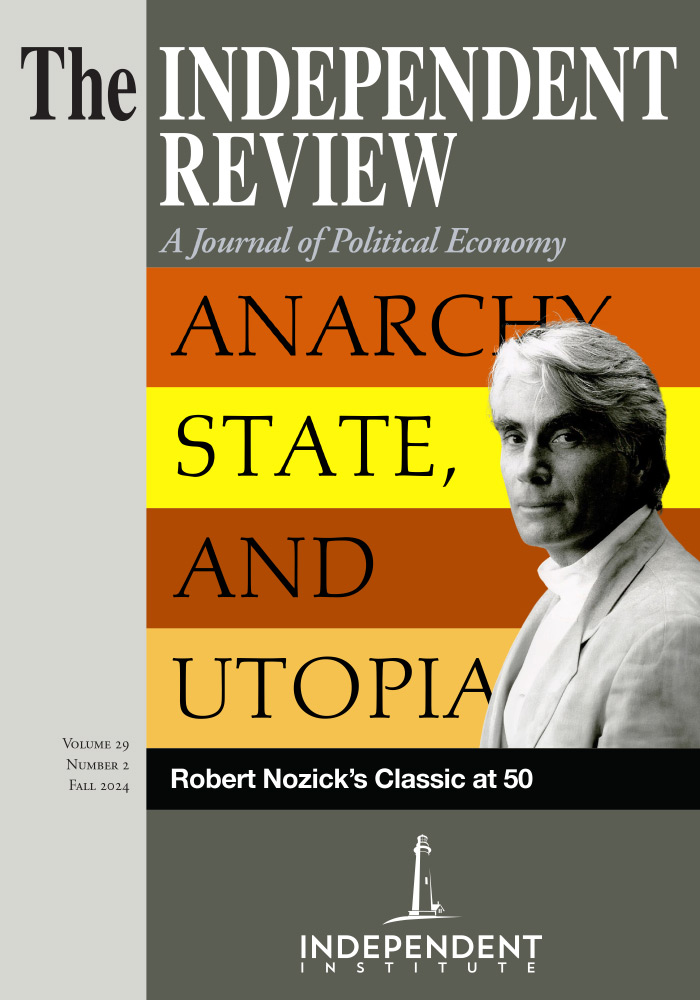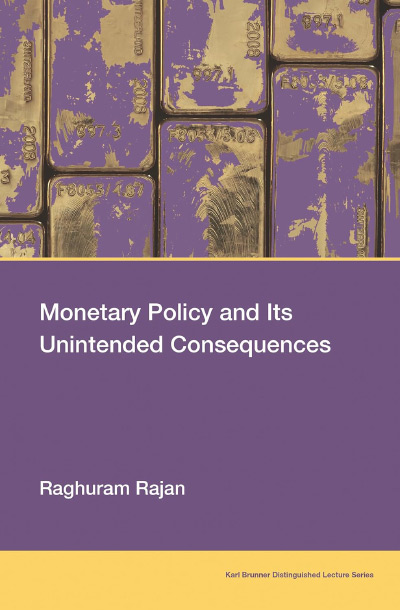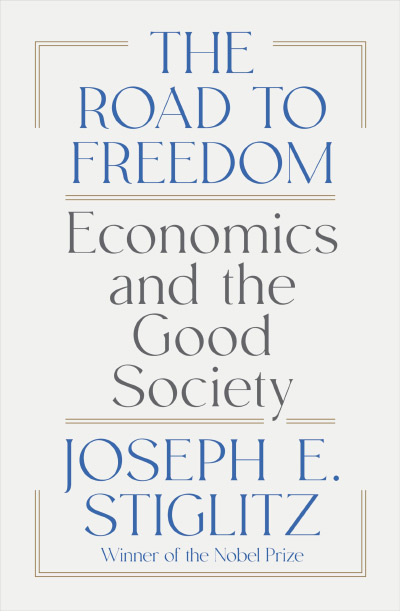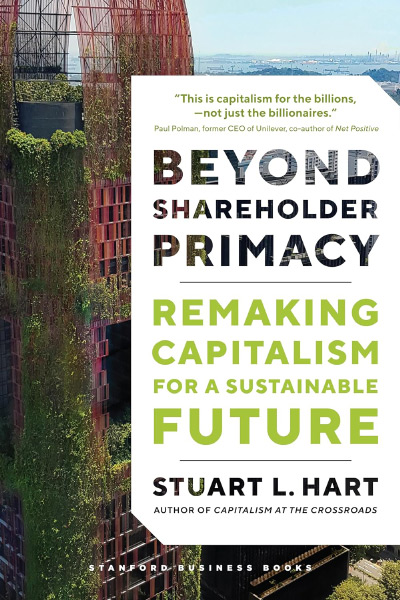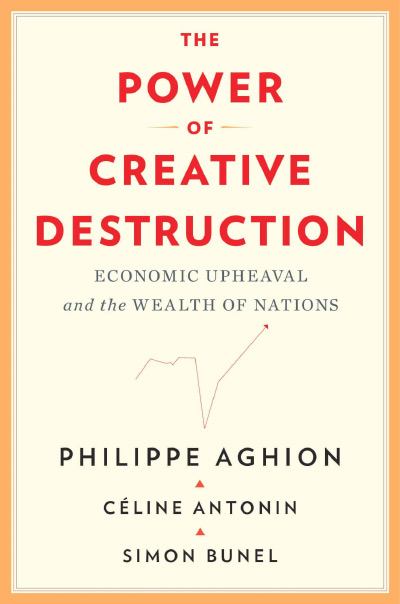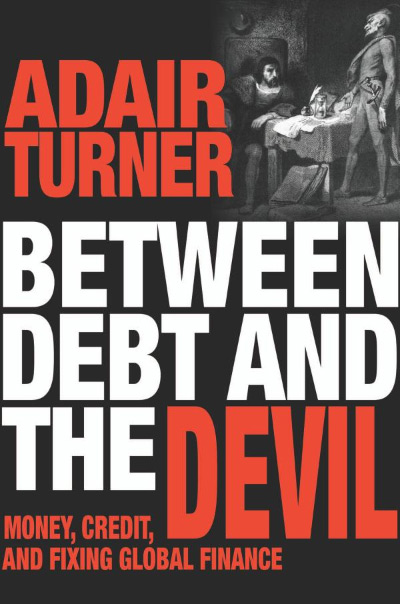Raghuram Rajan’s Monetary Policy and Unintended Consequences is a critique of monetary policies implemented by the major central banks of the industrialized world, particularly in response to the global financial crisis of 2007. He argues that unconventional monetary policy kept interest rates too low for too long. As a central banker from India, it should be no surprise that he has special concern regarding impacts on the developing world.
The book is made up of four chapters. Each is based upon a conference paper presented from 2013 to 2021. These chapters are combined with a short introduction and conclusion.
It sometimes seems that much central banking theory aims to stabilize short-term interest rates subject to the constraint that neither inflation nor unemployment rise too high. Why the constraint? Both high unemployment and inflation result in public outcry. While the express theory is about necessary changes in policy rates, suppose unemployment and inflation remained at acceptable levels? Short term rates could remain pegged. Compare this with the traditional monetarist approach. Central banks must keep the money supply on target and interest rates depend on market forces. Similarly, free banking combined with a commodity standard has nothing but market forces to determine interest rates.
How does this relate to Rajan’s concerns? He is worried about interest rates falling too low. If interest rates remain too low for too long, the result is excessive leverage. The excessive debt relative to assets held creates financial fragility: too much risk. At some point, perhaps when central banks raise interest rates again, the debtors will be unable to pay: a financial crisis. To avoid the crisis, avoid excessive debt. Keep interest rates high to deter firms and households from borrowing. Slower growth of output, higher unemployment, and lower inflation must be suffered to avoid setting the stage for a worse crisis in the future.
What is missing is any explanation of interest rate fundamentals. For Ragan, interest rates appear to be solely the result of central bank policy. However, the role of interest rates in a market economy is to coordinate saving and investment—expenditure on consumer goods with the production of consumer goods and services over time. If the supply of saving should increase or the demand for investment decrease, the natural interest rate decreases. Lower market rates bring saving and investment back into balance by decreasing the quantity of saving supplied and increasing the quantity of investment demanded. That is an increase in consumption and investment expenditure which brings aggregate expenditure back into equilibrium with potential output and at the same time adjusts consumption to the production of consumer goods now and in the future. If monetary institutions keep market interest rates above the natural rate, the result is too little consumption or investment expenditure, or both. Production falls below potential, unemployment rises, and inflation falls.
It is true that if saving and investment are in balance and an increase in the money supply pushes the market interest rate below the natural rate, investment will exceed saving. It is possible that this disequilibrium will involve excessive debt, but the resulting increase in the price level will also increase the equilibrium level of nominal debt at the same time it raises the nominal demanded for money balances. For a once-and-for-all increase in the money supply, the increase in the demand for nominal money balances absorbs excess liquidity and results in the market interest rate rising back to the natural rate.
The Austrian theory of the business cycle focuses on how the composition of output, the share devoted to capital goods production versus the production of consumer goods and services, is imbalanced during this process. Ragan instead emphasizes how excessive debt results in too little expenditure in the future. If there is too much debt generated in the process, perhaps those who borrowed too much will choose to spend less to pay down their debts. However, what of the added expenditures of those who lent too much?
Rather than one-shot increases in the quantity of money, we live in a world of persistent money growth and inflation. The result has not been persistent monetary disequilibrium, but rather an inflationary equilibrium with higher nominal interest rates due to inflationary expectations with little impact on real rates. It seems unlikely to result in significant impacts on either the composition of output or real leverage.
Rajan’s second chapter discusses the international transmission of low interest rates in wealthy countries to consequent excessive leverage in developing countries. His analysis suffers from the same lack of consideration of fundamentals. Suppose there were no change in saving or investment and a large country expands its money supply, pushes interest rates down and the inflationary policy impacts its trading partners, including by capital flows. It would be great if developing country complaints at the International Monetary Fund prevented such an undesirable policy, as Rajan suggests in his third chapter.
However, consider an alternative scenario. Suppose an increase in saving in a wealthy country results in lower imports from a developing country. The addition to world saving would tend to lower the world natural interest rate. All countries with open capital markets would need to lower their market interest rates. It is likely the developing country would receive a net capital inflow and additional investment which would at least partly offset the decrease in its exports.
Rajan’s final chapter is based on a presentation he gave after the deep recession and rapid inflation resulting from the pandemic. The standard view is that the least bad response to an adverse supply shock is to allow inflation to rise as output falls. When combined with a policy of letting bygones be bygones, so that an inflationary shock raises the growth path of prices while inflation returns to the target rate, central banks performed as should have been expected. Rajan’s worries that central bank efforts to keep inflation from falling too low and preventing unemployment would prevent them from limiting inflation appear overblown in hindsight, however worrisome the very negative real interest rates entailed by near zero nominal rates and the explosion in most measures of the money supply appeared. Eventually, interest rate targets were increased and inflation fell at least close to target, though the growth path of prices is much higher and continues to rise at least slightly. The public insists on describing this increase in the growth path of prices as inflation, though they appear more inclined to blame their elected officials for the “inflated” prices than their central bankers.
Rajan would do better to consider an alternative like stabilizing the growth path of nominal GDP. That approach would allow for higher inflation if there is an adverse supply shock. However, as bottlenecks are alleviated, especially in goods producing industries and transportation, goods prices would return to normal and disinflation would return the price level to its previous growth path as real output also recovered. That approach avoids a monetary contraction to limit or reverse supply-side inflation without breaking the rule, much less allowing an indeterminate upward ratcheting of the growth path of prices.
More closely related to Ragan’s concerns would be the consequences of a favorable supply shock. With nominal GDP level targeting, the result would be lower prices and transitional disinflation rather than an expansionary monetary policy aimed at raising inflation back to target. Furthermore, level targeting limits the needed decrease in nominal interest rates with a negative shock to aggregate demand. Any disinflation would be reversed, with transitional inflation lowering real interest rates until the price level recovers. This avoids at least some scenarios where the zero nominal bound on interest rates would be a problem.
In the quantity theory tradition, nominal GDP is interpreted as the flow of spending on output, which is the money supply multiplied by the income velocity of money. While velocity can be understood as the average number of times a unit of money is spent, it is better interpreted as the reciprocal of the demand to hold money relative to nominal income. If velocity is reasonably stable, keeping the money supply on a slow steady growth path will tend to keep the flow of spending on output on a slow steady growth path as well. If velocity is too variable, however, it is necessary to adjust the money supply for nominal GDP to behave in that fashion. Those needed changes in the money supply would be accommodating changes in the demand to hold money.
If money is created through the banking system, then there should be an interest rate that will generate the needed money supply. If shortages or surpluses of money typically have an opposite impact on bond markets, promptly returning the interest rate to target will require a change in the money supply that accommodates changes in the demand to hold money. So, there is a rationale for interest rate targeting. However, the goal is not to control interest rates but to get the money supply at the right level. Further, a central bank can only temporarily influence interest rates through its control of the money supply: either its quantity or the demand to hold it, such as by paying interest on bank reserves.
It is also control over the money supply that provides the nominal anchor for the market economy. The interest rate which results in slow stable growth in spending on output will change with desired saving and investment. Using monetary policy in a vain attempt to persistently keep interest rates away from that level can cause disastrous self-reinforcing changes in expenditure on output and inflation. This is true even if an effort to keep interest rates higher encourages investors to reduce risk. In the late 1920s, the Federal Reserve worried about risky stock market speculation, especially because some was financed by bank loans. But raising interest rates by slowing the growth rate of the quantity of money arguably triggered the Great Depression. Yes, stock prices came down and bankers became more risk averse, but at what cost?

